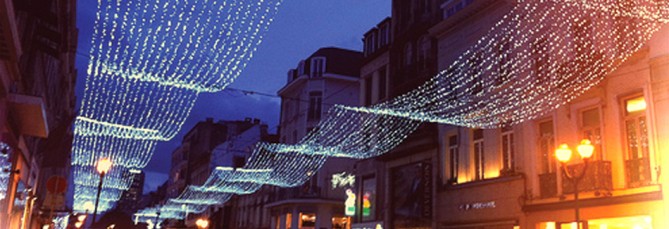

From early December until mid-January, the communes and traders’ associations put up cheerful Christmas lights in the city. And so countless lights twinkle for eight hours every night, except for Christmas and New Year’s Eve, when they stay on right through until morning.
A chain of little lights in a main shopping street uses around 350 kWh during the entire festive season. In the last few years, LED technology has increasingly been used, reducing the power consumption and providing a wide range of colours and shapes.
See also: 'What do watt and kWh mean?'

Putting up Christmas lights in the streets is a matter for the various Brussels communes and/or traders’ associations, and each commune has its own policy.
The Brussels-Capital Region also chips in regularly to support these initiatives financially. After all, these initiatives are a way of creating a festive and attractive atmosphere in the shopping districts or even of increasing the feeling of security.
The Christmas lights managed by the communes in the Brussels Region:
At eight hours a night – and all night long on Christmas Eve and New Year’s Eve - the lights are on for about 330 hours.
The power consumption depends on the type and size of each decoration:
Contrary to popular belief, Christmas lights are not energy intensive. Did you know, for instance, that the public lighting along municipal streets throughout the year accounts for less than one per cent of total consumption in the Region?
Nevertheless, the energy bill is set to fall sharply still further, thanks to the increasing use of LED bulbs. LEDs not only make it possible to choose from many different colours and types of decorations, but they also last a lot longer and use considerably less power than conventional bulbs. Thanks to LEDs, the installed capacity of light chains can be reduced almost tenfold, while the same fairy-tale atmosphere remains!
Subscribe to our newsletter and stay informed about energyfacts.